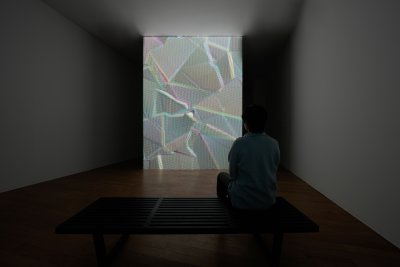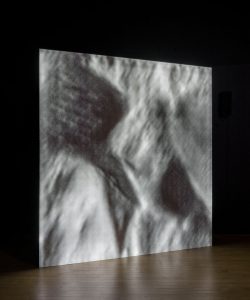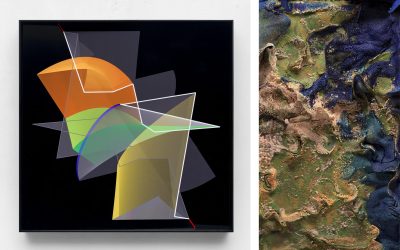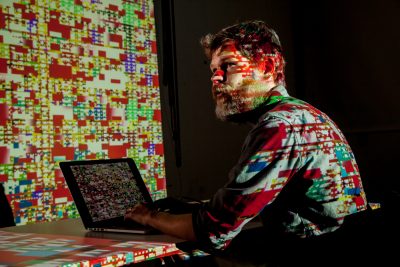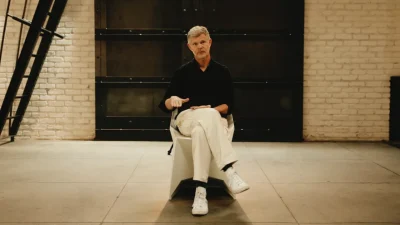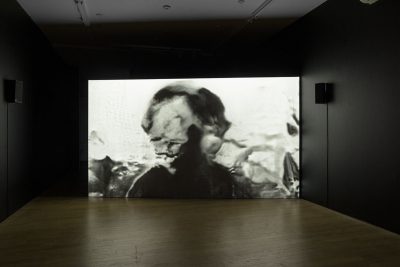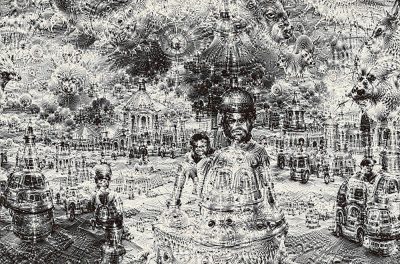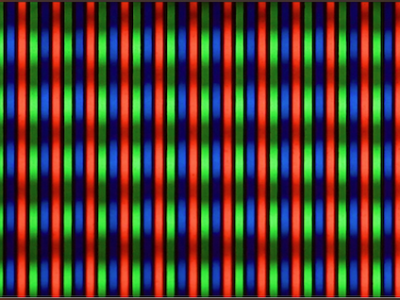bitforms gallery is pleased to announce a group exhibition May 25 through July 28 featuring work by U-Ram Choe, Michael Joaquin Grey, Rafael Lozano-Hemmer, Lynn Hershman Leeson, James Paterson, C.E.B. Reas, and Björn Schülke. The summer exhibition displays a wide range of art works influenced by and created in new media.
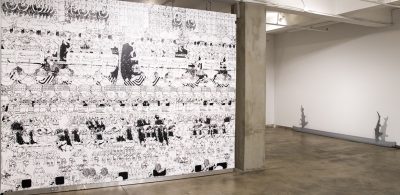

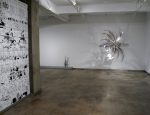
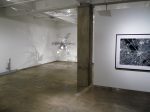
Summer 2007 Group Show
U-Ram Choe, Michael Joaquin Grey, Rafael Lozano-Hemmer,
Lynn Hershman Leeson, James Paterson, C.E.B. Reas, Björn Schülke
May 25 – July 28, 2007
This summer marks bitforms gallery’s sixth year of new media art programming in Chelsea.
bitforms gallery is pleased to announce a group exhibition May 25 through July 28 featuring work by U-Ram Choe, Michael Joaquin Grey, Rafael Lozano-Hemmer, Lynn Hershman Leeson, James Paterson, C.E.B. Reas, and Björn Schülke. The summer exhibition displays a wide range of art works influenced by and created in new media.
This fall marking its sixth year in Chelsea, and third year in Seoul, bitforms gallery remains a destination for those seeking art historical connections to visual new media practice today. Founded in 2001, bitforms gallery became the first commercial art gallery to champion art impacted by and designed with digital tools.
About the artists and work on view:
On display at bitforms gallery are pieces related to Rafael Lozano-Hemmer’s Amodal Suspension (2003), created to commemorate the opening of Japan’s Yamaguchi Center for Arts and Media in 2003. Designed as a large-scale interactive installation, the public could use the website www.amodal.net to send short text messages to each other using a cell phone or web browser, however, rather than being sent directly, the messages were encoded as unique sequences of flashes with 20 robotically-controlled searchlights, turning the sky around Yamaguchi into a giant communication switchboard. Inspired in part by the Tanabata tradition of hanging wishes on bamboo, the project received over 400,000 unique visitors from 94 countries. Exhibited are video documentation and an accompanying Lambda print, Amodal Suspension Sketch, which shows two aerial views of the city. On the left is a recent high definition satellite picture and on the right is an illustration from the Ouchi medieval period, characterized by some scholars as a Japanese renaissance. Overlaid on each side is a pattern of lights generated by the installation
This summer Rafael Lozano-Hemmer (b. 1967, Mexico) represents Mexico in the 52nd Biennale di Venezia (Jun 10 – Nov 21, 2007). The pavilion will host a solo show curated by Príamo Lozada and Bárbara Perea entitled, Some Things Happen More Often Than All of The Time, and is comprised of 6 artworks, including a new piece produced specifically for the pavilion. The show will be accompanied by a catalogue published in English and Spanish by Turner Books with texts by the curators, philosopher Manuel de Landa, curator Barbara London, critic Cuauhtémoc Medina, historian Victor Stoichita and an interview of the artist by critic José Luis Barrios. Also this summer in Europe, Rafael Lozano-Hemmer presents his recent large-scale, interactive installation, Homographies, at ArtBasel Unlimited (Jun 13 – 17). In New York, his work will also be in the exhibition Automatic Update at the Museum of Modern Art, opening June 25.
Also this summer the intricate kinetic sculptures of U-Ram Choe (b.1970, Seoul) will be featured in the Korean artist’s first solo museum exhibit at the Crow Collection of Asian Art in Dallas (Jun 7-Aug. 18). A United States debut, and following the sculpture’s premier at ARCO Madrid in Feburary–Choe’s Varietal Urbanus Female is suspended from the gallery ceiling, balancing mechanical organic movement in stainless steel with an imagination informed by natural history. Evoking precision and classifications of botany and marine biology, it is a creature that brings to mind sophistication in future genetic development and technology.
The female Urbanus, has a shape similar to that of a flower, and when releasing its incepted energy as light it opens its leaf-like body parts. It emits light from the genitals also, from which a great number of electrically-charged particles are released. Male Urbanus which prowl around the female waiting for the moment that light is released, also open their leaf-like body parts to receive the photons.
Urbanus are thought to inhabit the airspace above the city (at about 200M altitude), and therefore are often found at the upper floor of skyscrapers or on their roofs. It is rare that they are found by the city-dwellers of today, who can little afford to enjoy the sight of the sky, but there have been some reports that children have sighted Urbanus in the sky. Urbanus are active during the nighttime, which means that they are sometimes visible in nighttime satellite photographs.
“Choe presents us with an entire universe parallel to our own with detailed descriptions for each new species, giving its evolutionary history, feeding habits, life cycle and scientific genus,” explains David Elliot, Director of the Mori Art Museum in Tokyo. “As a result we are invited to admire both his manual virtuosity and conceptual prowess for devising such objects within a coherent framework or system.”
On display at bitforms gallery, Lynn Hershman Leeson’s (b. 1941, United States) Graph to Early Signs of Stress (1975) is among the 150 artifacts of transformation and identity documenting Roberta Breitmore’s existence between 1974 and 1978. An early excursion into virtual reality, straddling the boundary between fiction and reality, or art and life, Roberta Breitmore was animated through the application of cosmetics, applied to a face as if it were a canvas, as well as through her participation in real-life adventures. This project pushed historical boundaries of social construction in portraiture, as Hershman Leeson’s played with the politics of identity. Later to be known as a cyber-feminist, Hershman Leesons’s early work in photography and performance provided solid ground later for her avatars, film characters, artificially intelligent networked agents, and interactive sculptures.
Concurrently the Santa Monica Museum of Art exhibit Identity Theft: Eleanor Antin, Lynn Hershman, Suzy Lake, 1972-1978 features the most complete presentation to date of Lynn Hershman Leeson’s influential Roberta Breitmore project. Also in California this summer, Lynn Hershman Leesons’s work is also part of the touring WACK! Art and the Feminist Revolution exhibit originated by the LA MoCA (Mar 4-Jul 30, and traveling to the National Museum of Women in the Arts, D.C., Sept 21 – Dec 16).
June 15 Lynn Hershman Leeson’s critically acclaimed feature-length documentary Strange Culture opens this year’s Human Rights Watch 2007 International Film Festival at Lincoln Center in New York. Strange Culture tells the story of Steve Kurtz, founder of the Critical Art Ensemble, who stands accused on charges of bioterrorism by the US government. Also selected for the 2007 Sundance Film Festival and Berlin Film Festival, the film will screen at the Museum of Modern Art October 1.
For the past twenty years, Michael Joaquin Grey (b. 1961, United States) has been creating work that extends and plays with the boundaries of art, science and media. His investigations center on the development and the origins of life, language and form – as related to natural and complex systems. Critical moments in natural phenomenon and culture are objects in his work, as are the prepositional states of change between matter, energy, behavior, and meaning. Grey’s creative dialogue engages epistemological and pedagogical creative limitations of the tools and processes we use to observe, learn and play with our world. This exhibition features Grey’s Gametes, 1990, and Autonomic Yoke (male-female), 1991-2007.
Through June 16 at Gagosian Gallery, Grey’s 1992 sculpture Orange Gravity (California) is part of Beneath the Underdog, curated by Nate Lowman and Adam McEwen. In October Grey’s computational cinema work will be featured in Remix at the Berkeley Art Museum and Pacific Film Archive. Also this Fall new work by Michael Joaquin Grey will be included in the traveling group exhibition Leaded: The Materiality and Metamorphosis of Graphite, curated by Elizabeth Schlatter at the Univeristy of Richmond.
Untitled (Drawings from 2005, No. 1) by James Paterson (b.1980, UK) is a large black and white print on vinyl wallpaper that merges the artist passion for software and ink drawing. At the heart of Paterson’s work, there is little formal separation between drawing, animation and programming. Paterson brings his images to life through a natural synthesis of modern drawing tools, and the results resemble a graffiti that seems to write itself. Departing from traditional techniques, Paterson experiments with code and authors programs to assist him with all areas of his work. His drawings are scanned from sketchbooks, and form a vast digital library of source material for Paterson’s collages.
New work from C.E.B. Reas‘s (b. 1970, United States) ongoing Process series explores the dialectical relationship between naturally evolved systems and those that are engineered and synthetic. The imagery evokes transformation, and visualizes systems in motion and at rest. Equally embracing the qualitative nature of human perception and the quantitative rules that define digital culture, organic form emerges from precise mechanical structures. Using software as a generative tool, Process 11 constructs dense visual systems of activity, reminiscent of organic and crystalline surface textures. Through July 29 his work is also part of the touring Design Triennial at the Cooper-Hewitt National Design Museum, which will travel to Boston’s ICA (opening Sept 28).
Björn Schülke (b. 1967, Germany) designs objects that playfully transform live spatial energy into active responses in sculptural form. Born form a world of stuffed animals, spaceships, unusual scientific instruments and robots, some of these pieces also employ alternative energy sources- and speak powerfully to today’s environmental concerns. Exhibiting for the very first time Solar-Space-Mobile (2007), is delicate blue and white active wire sculpture adorned by solar cells that set the work in motion by powering two propellers. Suspended from the ceiling, this work is an effortlessly rotating satellite overhead.
